
Previous Stop
Watarase Keikoku Railway in Gunma Prefecture
The Watarase Keikoku Railway is actually a freight line that was once used to transport ore from the Ashio Copper Mine in Tochigi Prefecture. Travelling along this line at present days gives you a different experience even when compared with other sightseeing trains as it runs you through spots of historical interest in Japan with the well-preserved scenery from 150 years ago - experience the Taisho Period (1912-1926) of Japan.
From Asakusa Station in Tokyo, ride the Limited Express Ryomo on the Kiryu Line and you’ll arrive at Watarase Keikoku Railway Aioi Station in approximately 100 minutes.
Aioi Station
This is where your Watarase Keikoku Railway journey begins! The Kiryu Meijikan right next to the station was built in 1878. In the coffee room, enjoy sipping some coffee while keeping your ears open to the music from the phonograph playing in the background. It certainly gives off a 250-year nostalgic vibe.
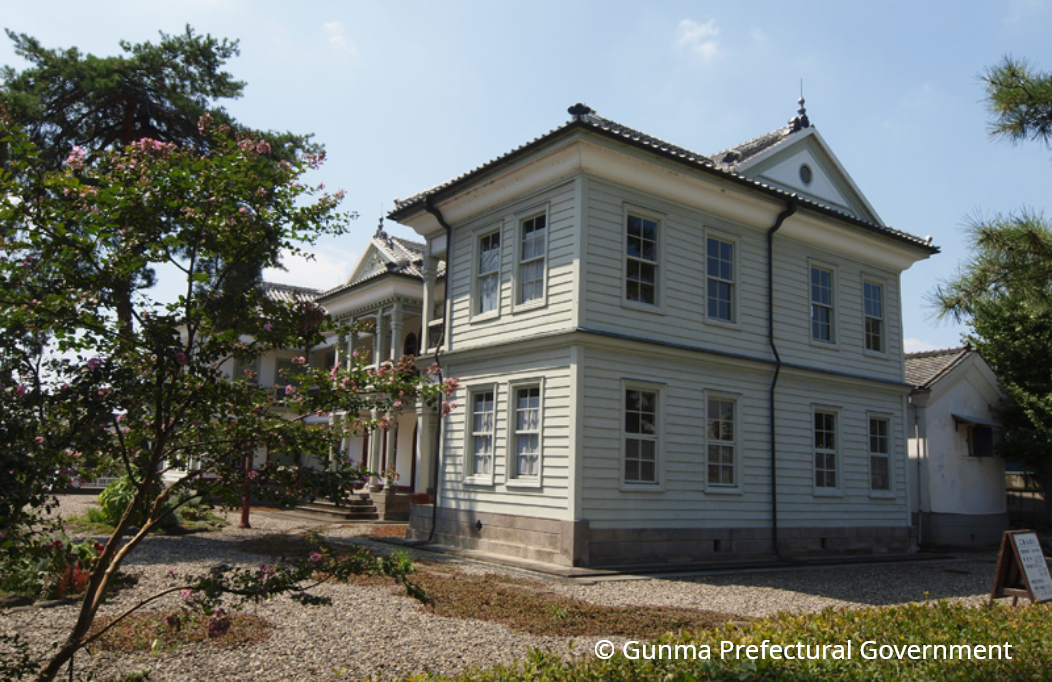
Omama Station
The station's building and platform, which were both built in the early Showa Period (1926–89) architectural style, have both been registered as Tangible Cultural Properties. A seven-minute walk from here, and you’ll catch beautiful views of the Takatsudo Gorge. Here, you can truly appreciate Tochigi's nature, as summer brings out deep greens of the surrounding nature flaunting plentiful life, whereas fall triggers the display of wonderful colours of the foliage.
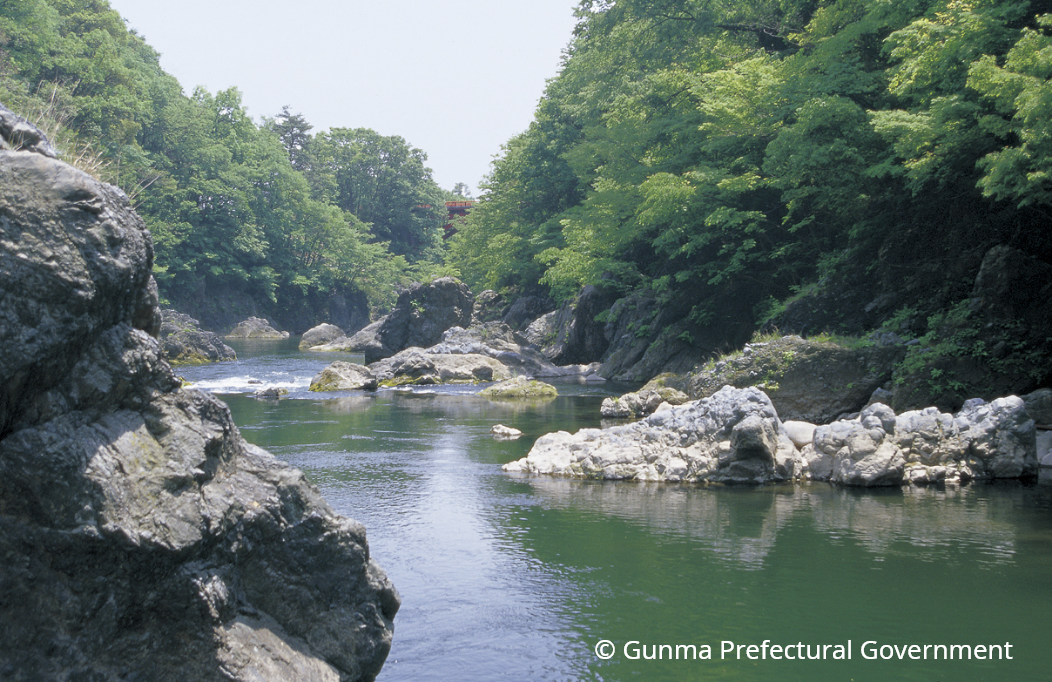
Kamikambai Station
Kamikambai Station was built in 1912, having seen and experienced the history of the railway since it was originally opened by the Ashio Railway Company. Due to the historic significance it carries, this particular train station is on the bucket list of many train fans from around the country. The gate is a rarity as it is made from wood. Giving off a nostalgic vibe which even reminds you of some anime, being at the station will seem like you have been brought into another world (isekai). So, remember to take a photo or two here!
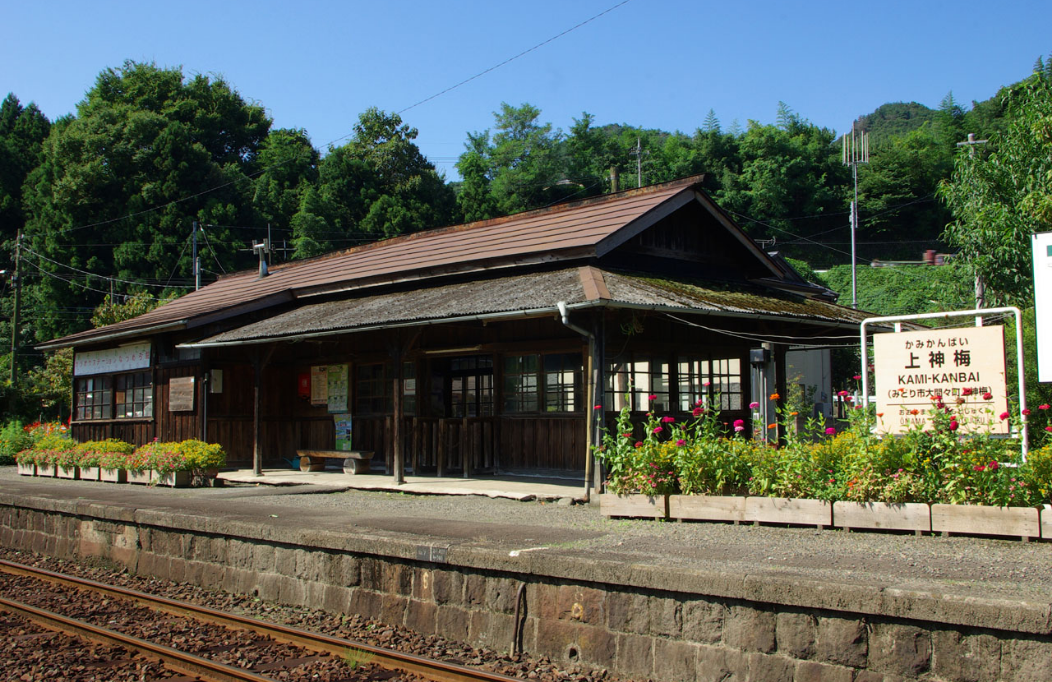
MIZUNUMA STATION
This spot has hot springs inside the station - a rare sight even for Japan, which is known for its numerous hot springs across the country. Alight here and relax in the warm waters to recharge yourself for the remaining leg of the journey.
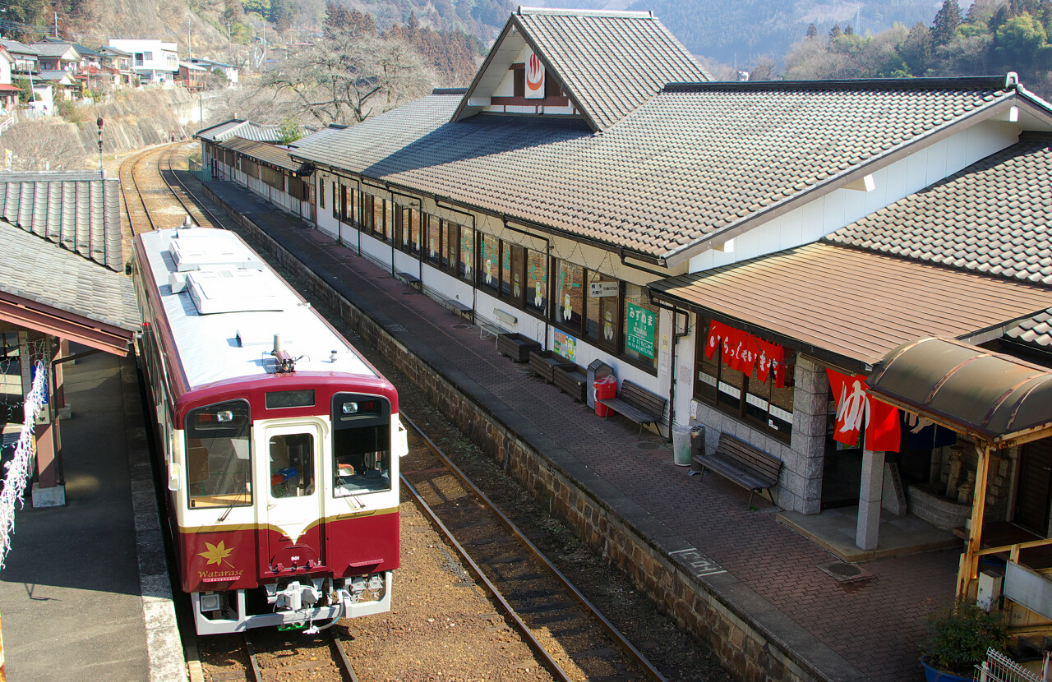
Godo Station
Godo Station has a spacious platform that has an old railway car refurbished into a restaurant, Ressha Restaurant Seiryu. You can dine inside, but you can also get your hands on a station lunchbox (eki-ben) to enjoy back in your seat on the Watarase Keikoku Railway. The area is famous for peach blossoms, so during a specific window of time in spring, you can admire the different shades of pink of both peach and cherry blossoms blooming along the line.

Tsudo Station
Located in the middle of Ashiomachi, the station building was constructed with a unique architectural method called half timbering from northern Europe. The vicinity of the area hosts the town’s most famous spot - the Ashio Copper Mine - only a five-minute walk from the station. Take the bus in front of the station if you want to head to JR Nikko Station.
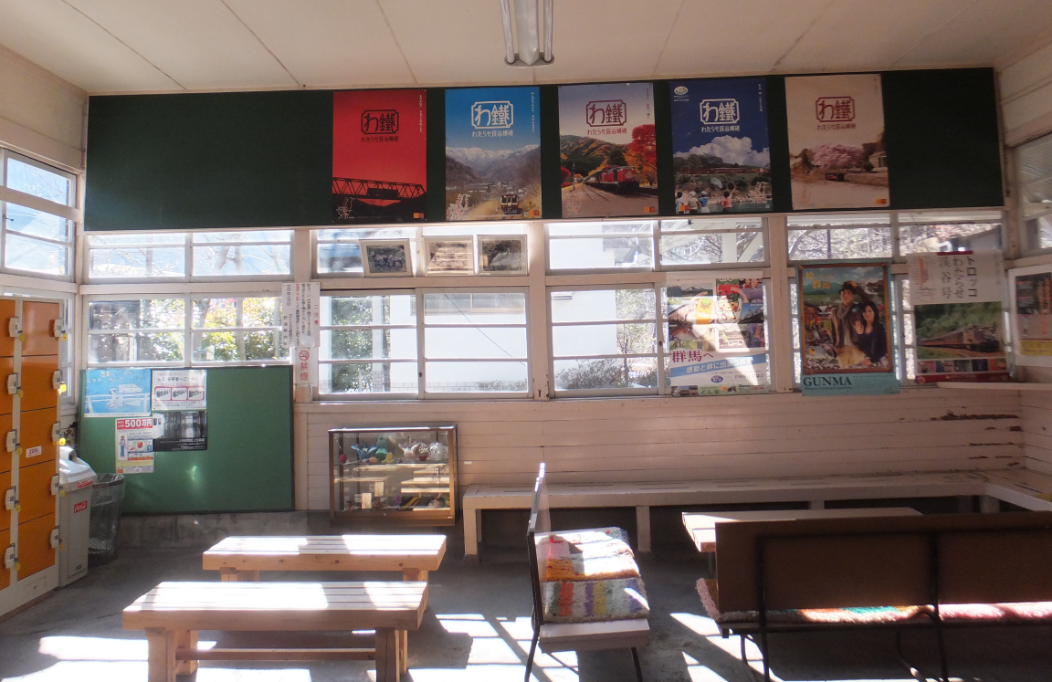
Other Local Lines
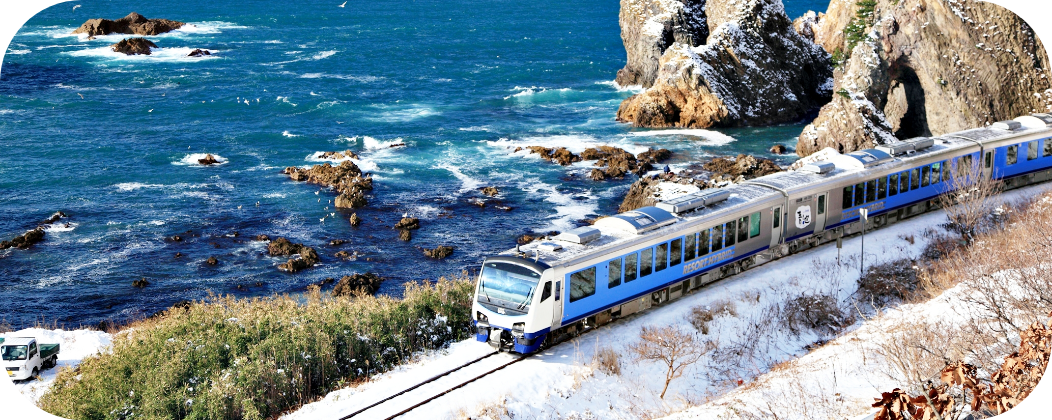
Resort Shirakami (Gono Line)
From the windows of the train running between Akita, Hirosaki and Aomori Stations, passengers of the Resort Shirakami can enjoy scenic views of the magnificent Shirakami Mountains, the Sea of Japan and the well-maintained apple orchards of Aomori. If you catch sight of the Sea of Japan during the snowy season, it is likely you get the chance to take in the winterscape against the dramatic backdrop of the expansive sea and clear blue sky.
A charm of the train is its beautiful interior - with the good use of beech, Akita cedar, Aomori hiba (cypress), and other timbers from trees along the train line.
*The Gono Line suffered extensive damage due to heavy rain in August 2022, and is currently undergoing reconstruction. At the moment, the Resort Shirakami is only operating between Aomori and Ajigasawa Stations.
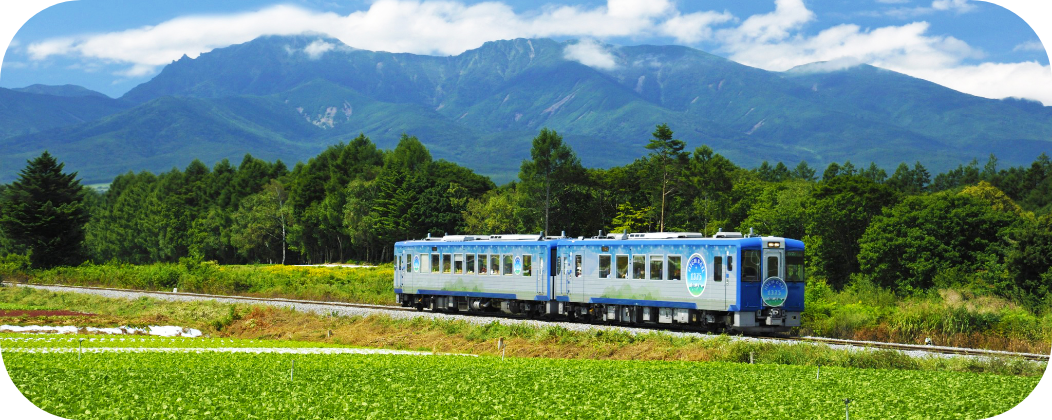
HIGH RAIL 1375 (Koumi Line)
This highland train, which runs through the Nobeyama Plateau and at an elevation of over 1,000 metres, offers you panoramic views of the Yatsugatake Mountain Range. The Koumi Line is home to 9 of 10 of JR's stations on highest-elevated spots, and between Kiyosato Station and Nobeyama Station the train runs at an elevation of 1,375 metres - the highest point reached by a JR railroad. With its tracks stretching out into the magnificent open landscape, the train at night looks as if it is heading for the starry sky.
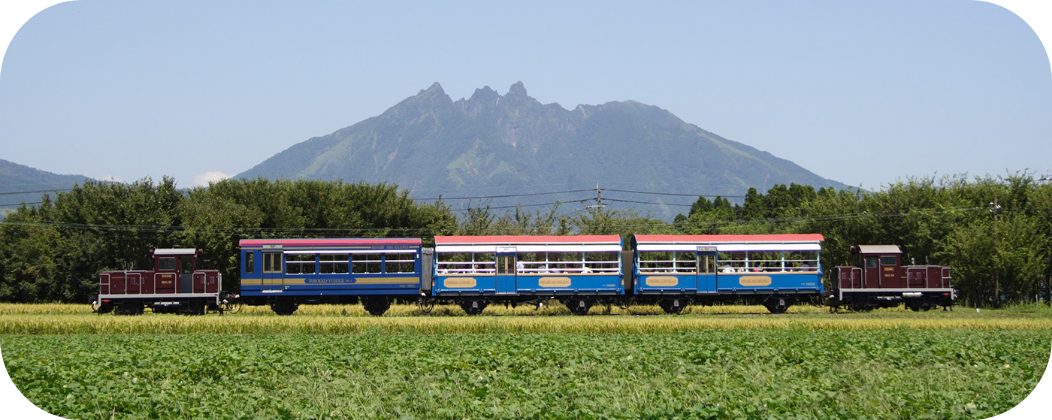
Minami Aso Railway
The Minami Aso Railway - the pride of Kyushu - runs across the foot of Mt. Aso in Kumamoto Prefecture and offers visitors the scenery view from an open-air trolley train. It was known as one of the most scenic railroad lines in Japan, but due to the damages caused by the Kumamoto earthquake, it has been forced to operate on a partial basis. The entire line is scheduled to resume full operation in 2023.
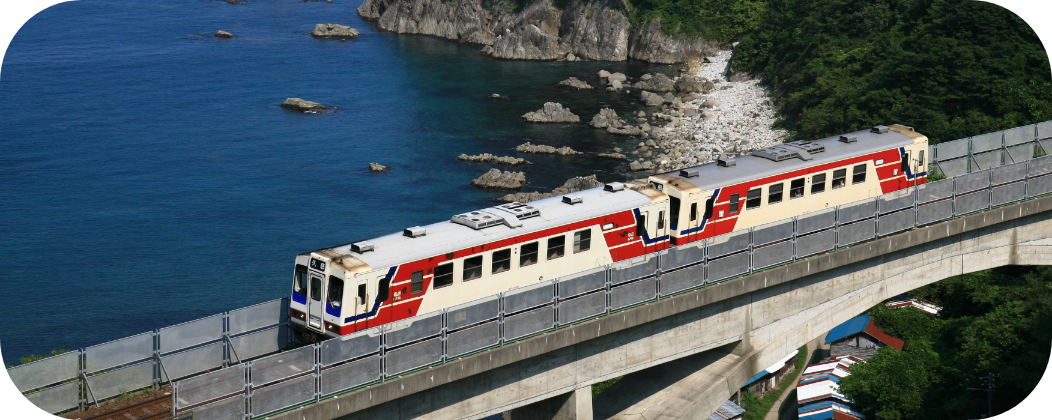
Sanriku Railway
The Sanriku Railway runs along the Sanriku Coast of Iwate Prefecture. The line runs along the ria coastline, which is characterised by narrow bays and inlets that look like the edges of rose leaves. Along the journey, be enchanted by seasonal scenery, and during winter, head out on a kotatsu train. Shiraikaigan Station, an unmanned station with its relatively pristine vicinity, usually see just about five trains a day. For a unique experience, try visiting this particular station.
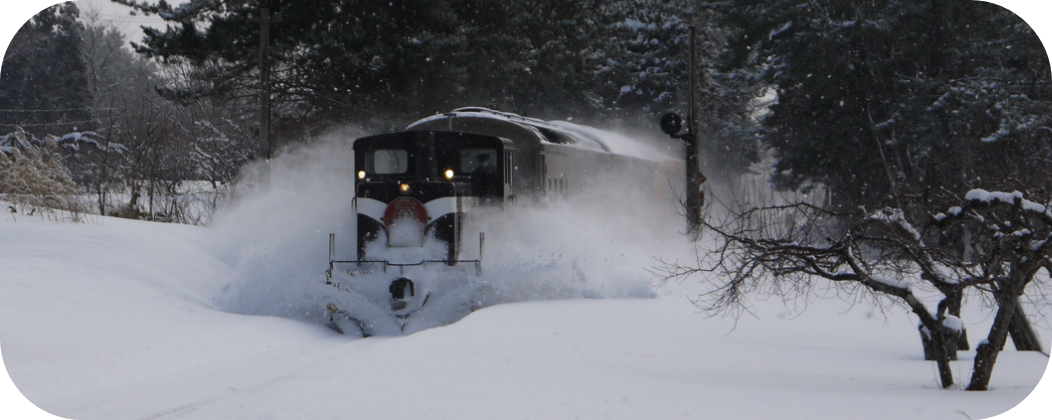
Tsugaru Railway
For those who yearn to explore deeper into Japan, try heading out via Tsugaru Railway to the Tsugaru region of Aomori Prefecture. Winter is said to be the best season to enjoy the magnificent nature and culture of Oku-Aizu. One of the train cars is equipped with Dharma stoves, and you can look out over the silvery white winterscape while being embraced by the warmth of the train within. In spring, the train runs through rows of sakura trees, whereas in summer it is decorated with wind chimes, and in autumn, it is installed with insect cages with Japanese bell crickets in them. You can certainly feel the seasons of Japan when you ride on its trains.
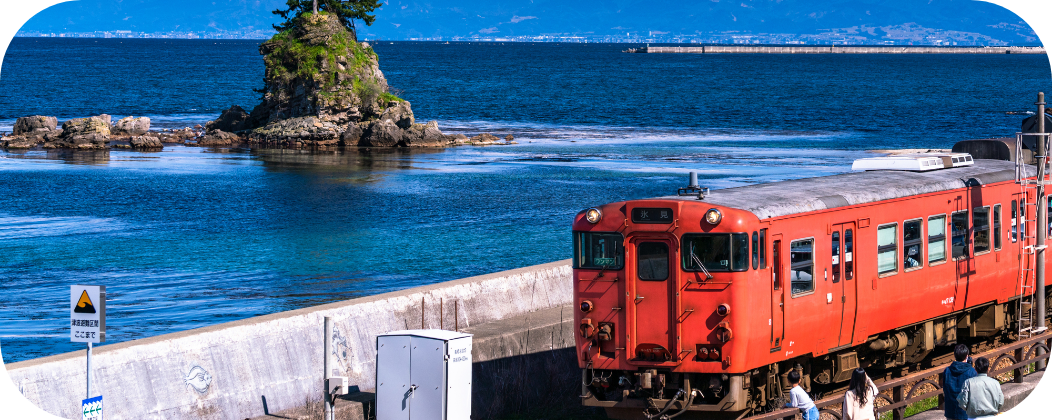
Himi Line
The Tateyama Mountain Range, which can be seen from the Toyama Bay Goshi while driving along the Toyama Bay Coast, is a breathtaking sight to behold. The driving route brings you to various amazing sites, including good old-fashioned townscapes, scattered villages along the way, as well as the World Heritage Site - Gokayama Gassho-Zukuri Village, and Takaoka Mikurumayama Festival and Johanahikiyama Festival which were registered as an intangible cultural heritage at the end of 2016.

Next Stop